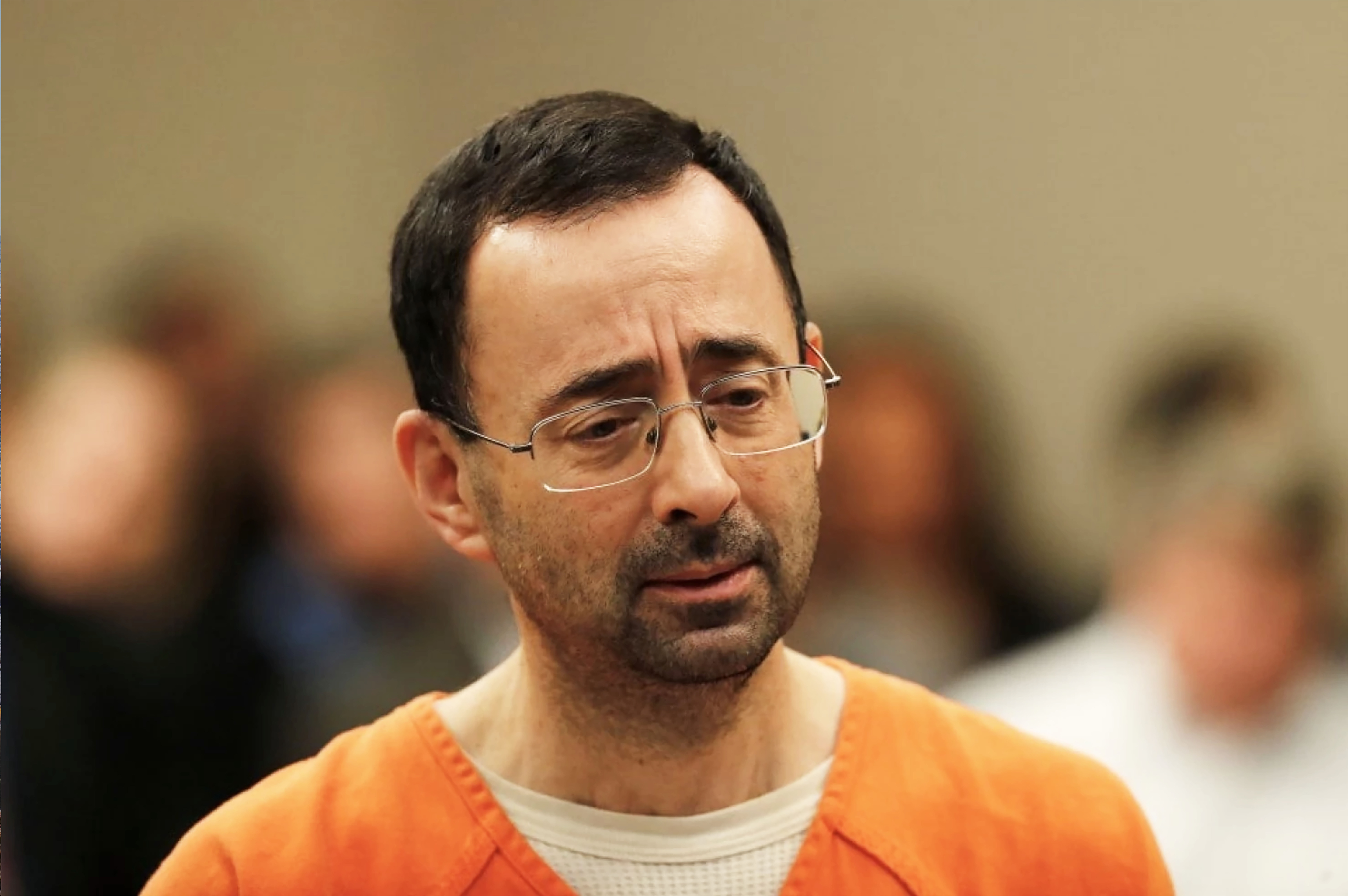“You do realize now that we, this group of women you so heartlessly abused over such a long period of time, are now a force, and you are nothing,” Aly Raisman, six-time Olympic medalist in gymnastics, told Dr. Lawrence Nassar, a former doctor for the women’s Olympic gymnastics team. Nassar is now accused by over 250 women of sexual abuse, Raisman included. A monster who practiced sexual abuse for years without consequence, Nassar has finally been charged with 10 counts of criminal sexual conduct and sentenced to 40-175 years in prison.
Instances of sexual harassment and abuse are frequently settled with quiet compensatory settlements and minimal vocal presence of victims. In April 2017, the New York Times reported that—since 2002—Bill O’Reilly and his former employer, Fox News, made at least five settlements to various female coworkers of O’Reilly. These coworkers complained about a range of inappropriate behavior and harassment on the part of O’Reilly which, included verbal abuse, lewd comments, unwanted advances and phone calls in which it sounded as if O’Reilly was masturbating, according to several documents and interviews. Fox continued to both renew O’Reilly’s contract and increase his salary as The O’Reilly Factor generated hundreds of millions of dollars in advertising revenue for the network—more than $446 million just between 2014 and 2016, according to Kantar Media. It wasn’t until O’Reilly’s dismissal after the exposure of his conduct became a front-page story that the words of his victims were finally heard. In these types of settlement cases, often in the workplace, abusers and companies seek to buy the silence of the victim in an attempt to preserve self-image.
But 2017 was a watershed year for standing up to criminal mistreatment. Women, en masse, began to speak. Disturbing and persistent horrors of Hollywood and the media were exposed, sparked by the seemingly never-ending stories about mogul producer Harvey Weinstein. Now the athletic world is having its moment, and Nassar’s case is astonishing in volume. Consistent with patterns of powerful figures in the media, as a result of the years of abuse, the entire USA Gymnastics board of directors resigned. Nassar also worked at Michigan State University and is now facing testimonies from victims at MSU.
The regiment and strict instruction that is so ingrained in sports, especially gymnastics, is a large factor as to why Nassar’s abuse was able to persist for so long and hurt so many innocent young women. Gymnasts, like all athletes, are conditioned to be obedient and undefiant. They are team players who follow instructions without question under the guided trust that their participation will aid the success of the collective group. Nassar told his victims that his predatory acts were part of a medical healing process which, of course, they were not. They were sickly, selfish actions. Nassar’s deranged sexual pleasure came at the harm of innocent victims. But these young women, whom society constantly reminds to be compliant and agreeable, were silenced out of fear of questioning the actions of a grown, adult man with a professional title traditionally representative of a trustworthy figure.
A despicable factor in these cases is the consistent pattern of neglect demonstrated by the boards and officials at both MSU and the Olympic Games who had the power to act, yet never did. In 2014, Amanda Thomashow was abused by Nassar when seeking medical help for injuries sustained during her cheerleading years. She spoke with officials at the school, who opened an investigation into Nassar’s conduct. Thomashow remembers these officials seemed disturbed by her descriptions of Nassar’s behavior and determined to ensure such incidents would not continue. After interviewing both Thomashow and Nassar, however, three of Nassar’s physician colleagues concluded that Nassar’s actions were “medically appropriate,” and the school decided that the case was not in violation of existing sexual harassment policies. Nassar’s treatment was not medical, and MSU enabled the mistreatment of dozens of young women.
But the significance of Nassar’s sentencing is undermined by the fact that, as of July 2017, Nassar, 54, is already serving 60 years in prison for federal child pornography charges. Nassar’s life wasn’t destroyed by the raw and emotional statements of survivors, nor his sentence; he was already going to die in a cell. Previous wrongdoings had ensured he would live his final years as a humiliated and hated criminal of society. How must this feel for his victims, not being able to harm someone who inflicted so much pain upon them? For many survivors, having their stories heard and seeing Nassar behind bars is reassuring. But the hatred must burn so much deeper in these young women and their families, who each day have to grapple with the memories of abuse.
Thank goodness survivors bravely and assertively came forward to tell their stories, and testified to the treatment—both Nassar’s and the officials’ of the institutions— they endured. But perhaps this came too late. These young women are on the long, arguably never-ending road to healing from unspeakable traumas. As for Nassar, he will never truly be hurt for this.









